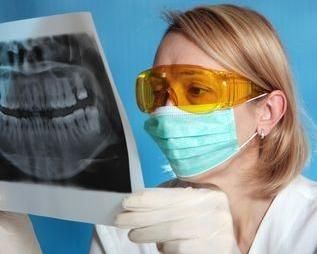Osteoporosis is a bone disease marked with a deteriorating bone complex leading to a decrease in bone mineral density (BMD) of about 2.5 standards deviation DXA which causes the “porous” characteristic of the bone. The bone becomes brittle and is highly susceptible to fracture. Postmenopausal osteoporosis is commonly seen in aging, menopausal women, but men reaching the age of 75 sometimes get senile osteoporosis too. The combined aging population of osteoporosis-susceptible individuals is alarming, but the increased risk for bone fractures, a marked feature in osteoporosis, gave this disease a more sinister touch. Treatments for osteoporosis involve a combination of lifestyle changes and medication.
Lifestyle changes includes exercise, proper diet of green, leafy vegetables, and prevention of fracture occurrence. Weight-bearing exercises such as walking flights of stairs frequently may help strengthen the bones. Some simple exercise such as squatting can also do the trick, as a prevention and as a strengthening regimen. Diet high in calcium and vitamin D, along with calcium and vitamin D supplements, may also prevent osteoporosis and also treat it if prevention was not done. Calcium is known for its bone healing, bone strengthening and bone formation qualities. Vitamin D, on the other hand, may come in supplement form, but the increased risk in kidney stone formation may opt you to take vitamin way the natural way: that is, by basking in the mild sunlight of early morning until 8-9 am. Vitamin D has shown to decrease risk of bone fractures in aging people who has osteoporosis by increasing about 1% of their bone density. Another vitamin showing promise for bone strengthen and decreasing risk for fracture is Vitamin K. This also comes in supplement forms, but natural sources of vitamin K are found in green leafy vegetables such as spinach, asparagus, green beans, broccoli, Brussels sprouts, kale and mustard greens. Fracture prevention includes side-rails on bed and hand rails on comfort rooms; refrain from putting skid mats outside the comfort rooms, doorway or stairways; and have your room transferred on the ground floor to decrease risk of sliding off the stairs.
Although there are lifestyle changes for osteoporosis, medication also aids in subduing bone degeneration normally seen in senility. One of the commonly used drug is bisphosphonates. The biphosphonate, Alendronate Sodium (Fosamax) is commonly used as a first-line treatment for women with menopausal osteoporosis. Although the drug caused bone empowerment in the first 4 years of Fosamax use, new studies published in the 2011 February issue of the Journal of the American Medical Association (JAMA) shows that long-term use of Fosamax in five years period may cause Fosamax users to suffer from bone breakage. Many claims arose regarding Fosamax's link with atypical, low-impact femur fractures experience by Fosamax users. This issue is an additional burden for Fosamax's manufacturer, Merck, who is already bombarded with ONJ lawsuits and other Fosamax side effects ailing the consumers.
Notwithstanding the easily accessible and attainable lifestyle changes, medication is needed for osteoporosis treatment. But you must be sure to take medication for osteoporosis treatment to aid in fracture prevention, not worsen your condition and cause atypical, low-impact femur fracture instead. If you or your loved one suffered from femur fracture due to Fosamax use, you may want to talk to a reliable and effective Fosamax lawyer to help you get your Fosamax fracture lawsuit into motion. Visit the Fosamax femur fracture lawsuit site for more information.

